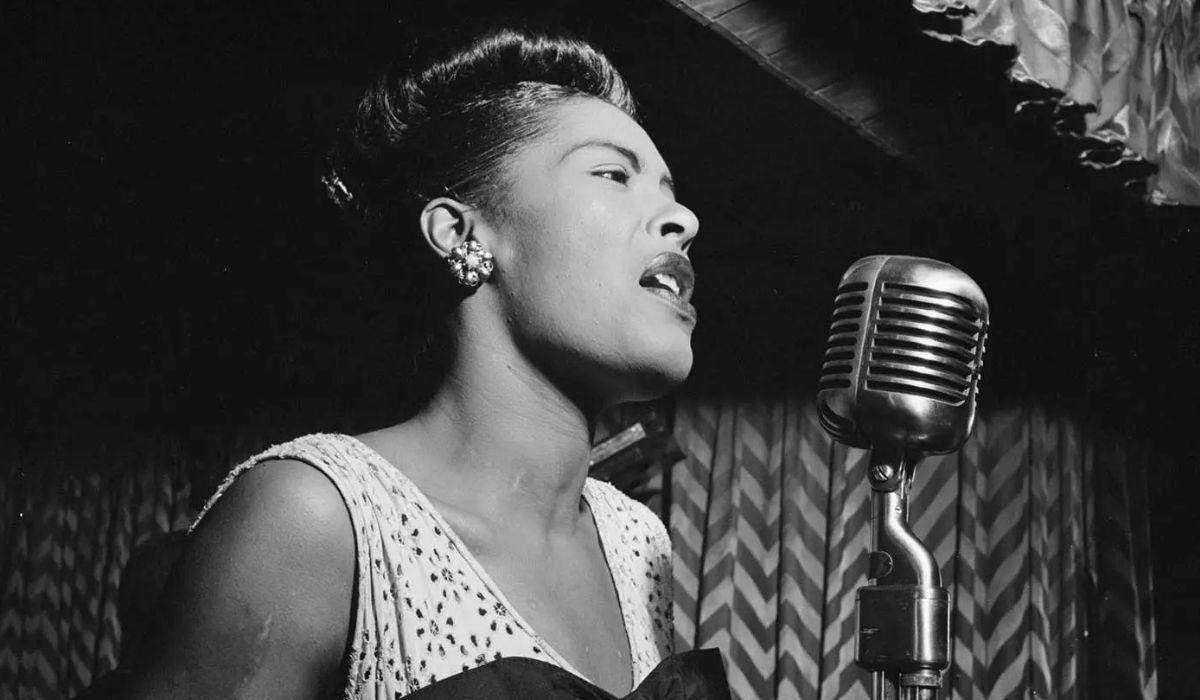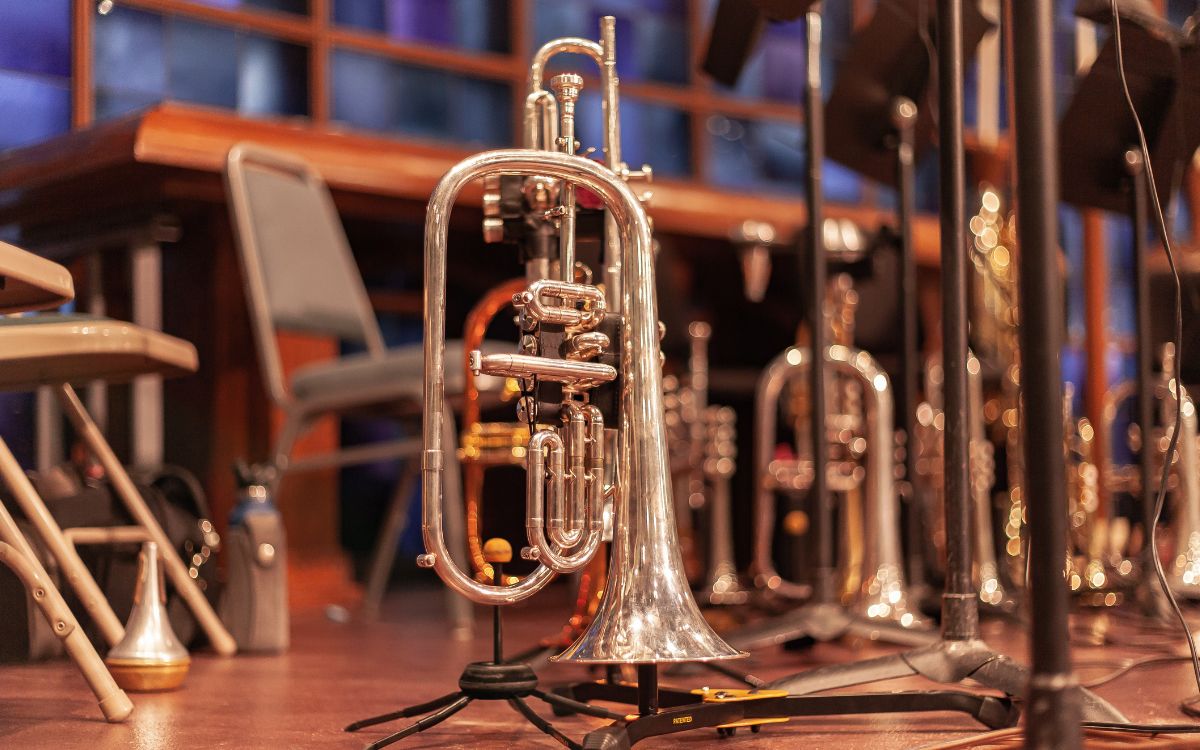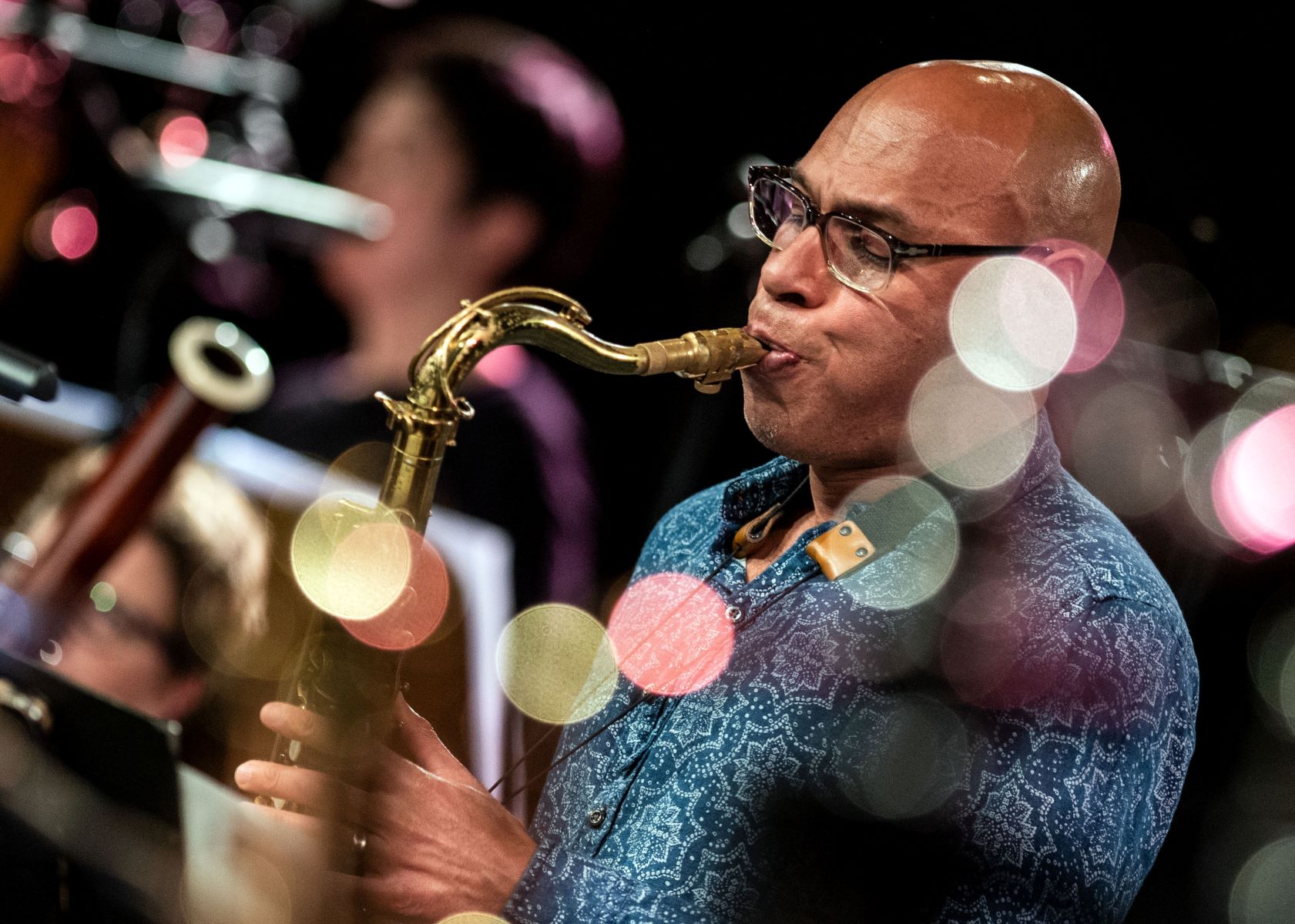Home>Instruments>Vocalist>What To Do During Instrumental Breaks As A Jazz Vocalist


Vocalist
What To Do During Instrumental Breaks As A Jazz Vocalist
Published: January 23, 2024
Discover expert tips for jazz vocalists on how to make the most out of instrumental breaks. Enhance your performance skills as a vocalist.
(Many of the links in this article redirect to a specific reviewed product. Your purchase of these products through affiliate links helps to generate commission for AudioLover.com, at no extra cost. Learn more)
Table of Contents
- Introduction
- Understanding the Purpose of Instrumental Breaks in Jazz
- Developing an Awareness of the Band’s Dynamics
- Listening and Analyzing the Instrumental Solos
- Improvising Scat Vocals during Instrumental Interludes
- Engaging with the Audience during Instrumental Breaks
- Collaborating with the Band during Instrumental Sections
- Experimenting with Vocal Techniques during Instrumental Breaks
- Incorporating Vocal Percussion or Rhythmic Patterns
- Conclusion
Introduction
Instrumental breaks are an integral part of jazz performances, allowing musicians to showcase their improvisational skills and express their individuality. As a jazz vocalist, navigating these instrumental interludes can be both exciting and challenging. While the band takes center stage during these moments, it doesn’t mean that the vocalist has to simply step back and stay silent. Instead, it presents an opportunity for the vocalist to find their own unique role and contribute to the overall musical experience.
In this article, we will explore various strategies and techniques for vocalists to make the most of instrumental breaks and enhance their performances. From scatting to engaging with the audience, collaborating with the band, and experimenting with vocal techniques, there are numerous ways to leave your mark during these musical pauses.
Understanding how to approach instrumental breaks not only enables vocalists to contribute to the ensemble’s dynamic, but also allows for greater creative expression and connection with the audience. So, let’s dive in and discover what to do during instrumental breaks as a jazz vocalist.
Understanding the Purpose of Instrumental Breaks in Jazz
Instrumental breaks in jazz serve several important purposes within the musical framework. Firstly, they provide an opportunity for band members to showcase their virtuosity and display their improvisational skills. These breaks highlight the individual talents of each musician as they take turns playing solos, creating a captivating and dynamic performance.
Furthermore, instrumental breaks allow for a change in texture and pacing within the music. They offer a break from the vocal melody, adding variety and complexity to the overall composition. This contrast not only keeps the music fresh and engaging but also provides a platform for the vocalist to explore different ways of contributing to the performance.
Instrumental breaks also foster collaboration among band members. Rather than competing for the spotlight, jazz musicians work together to create a cohesive and harmonious sound. This collaborative spirit allows for seamless transitions between the vocalist and the instrumentalists, enhancing the overall musical experience.
As a jazz vocalist, understanding the purpose of instrumental breaks is crucial in order to effectively navigate these sections. It’s important to approach them with a sense of appreciation for the individual artistry of your fellow musicians, as well as an understanding of how you can fit into the musical tapestry during these moments.
In the next sections, we will explore different strategies for vocalists to make the most of instrumental breaks, including techniques for improvisation, audience engagement, collaboration with the band, and experimenting with vocal techniques. By incorporating these approaches into your performances, you can elevate the quality of your jazz vocal delivery and create memorable musical moments for both yourself and your audience.
Developing an Awareness of the Band’s Dynamics
As a jazz vocalist, developing a keen awareness of the band’s dynamics is crucial when navigating instrumental breaks. Understanding the roles and contributions of each member allows you to seamlessly integrate your vocals into the overall performance.
Start by familiarizing yourself with the instrumentation of the band. Pay attention to the different instruments and their unique characteristics. This will help you identify opportunities to complement and interact with specific instrument solos during instrumental breaks. For example, you can mimic the phrasing of a saxophone solo with your vocals or harmonize with a trumpet player’s melodic lines.
Additionally, take note of the band’s dynamics and energy levels during their solos. Is the pianist playing softly and delicately or is the drummer driving a high-energy rhythm section? By observing and listening to the band, you can adjust your vocal approach accordingly. If the band is playing softly, you may want to sing in a more intimate and subdued manner. Conversely, if the band is playing with vigor and energy, you can match their intensity with powerful and spirited vocals.
Another aspect of developing awareness is understanding the structure and form of the jazz composition. Pay attention to cues such as key changes, rhythmic patterns, and chord progressions. This knowledge will allow you to anticipate and navigate the instrumental breaks with ease, making your vocal contributions cohesive and harmonious with the band’s performance.
Finally, communication with the band is essential to develop a strong musical connection. Engage in conversations during rehearsals or performances to understand their approach and intentions. This dialogue will enable you to align your vocal contributions with the band’s musical direction, ensuring a cohesive and seamless performance during instrumental breaks.
By developing an awareness of the band’s dynamics, you can integrate your vocals harmoniously during instrumental breaks. Understanding the roles of each band member, adjusting your vocal approach to match the energy levels, and communicating effectively will result in a cohesive and dynamic musical experience that captivates both the band and the audience.
Listening and Analyzing the Instrumental Solos
One of the key aspects of making the most out of instrumental breaks as a jazz vocalist is actively listening to and analyzing the instrumental solos performed by your bandmates. By doing so, you can gain valuable insights into the melodic ideas, rhythmic patterns, and overall mood of the music, allowing you to contribute in a meaningful way when it’s your turn to join in.
First and foremost, attentively listen to the instrumental solos during the breaks. Pay attention to the melodic lines, phrasing, and the emotions that they evoke. This will help you understand the musical language being expressed by the instrumentalists and enable you to respond in a complementary manner when it’s your time to sing. Additionally, take note of any interesting rhythmic patterns or motifs that are being played. This information can inspire you to use similar rhythmic ideas in your vocal improvisations during the instrumental breaks.
As you listen to the instrumental solos, try to analyze the underlying harmonic progressions and chord changes. Understanding the harmonic structure of the piece will help you navigate the instrumental breaks with confidence. Identify the chords being played and consider how they relate to the vocal melody and your improvisational choices. This harmonic awareness will enable you to make informed decisions and create harmonically pleasing vocal lines in real-time.
Furthermore, pay attention to the dynamics and the overall feel of the instrumental solos. Notice when the intensity rises, and when it subsides. This awareness will allow you to adjust your vocal approach accordingly, matching the energy of the band during the breaks. Whether it’s responding with powerful and vibrant vocals or delivering soft and intimate lines, your ability to connect with the instrumentalists’ dynamics will enhance the overall musical experience.
Apart from listening and analyzing, it can be beneficial to actively engage with the instrumentalists during their solos. Show your support and appreciation by nodding, smiling, or even applauding their performances. This interaction fosters a sense of camaraderie and encourages a collaborative spirit among the band members.
In summary, listening and analyzing the instrumental solos during breaks is essential for a jazz vocalist. By actively engaging with the music, understanding the melodic and rhythmic ideas, analyzing the harmonic progressions, and connecting with the dynamics of the band, you will be well-equipped to contribute meaningfully when it’s your turn to showcase your vocal talents during the instrumental breaks.
Improvising Scat Vocals during Instrumental Interludes
Scat singing, the art of vocal improvisation using nonsensical syllables, is a versatile and expressive technique that jazz vocalists can employ during instrumental interludes. It allows you to create melodies, rhythmic patterns, and even imitate instrumental sounds with your voice. Mastering the art of scat singing opens up a world of creative possibilities during instrumental breaks.
To successfully improvise scat vocals, it’s important to have a solid understanding of the song’s melody and chord progressions. This knowledge provides a foundation that you can build upon with your vocal improvisations. Experiment with different melodic ideas, using various intervals and scales to create interesting and engaging vocal lines.
When scatting during instrumental breaks, try to listen to the instruments and take inspiration from their solos. Use the phrasing and rhythmic patterns played by the instrumentalists as a guide for your own vocal improvisations. This interaction between the instruments and your voice adds depth and excitement to the performance, creating a cohesive musical experience.
Don’t be afraid to incorporate vocal techniques such as vibrato, slides, and vocal ornaments into your scatting. These techniques can add flair and personality to your vocal improvisations, enhancing the overall expressiveness of your performance.
Furthermore, scat singing allows you to imitate instrumental sounds and textures with your voice. Experiment with mimicking the articulation and timbre of different instruments. For example, you can use vocal fry or falsetto to imitate the sound of a saxophone or use vocal percussions techniques to replicate a drumbeat. These creative choices bring a unique and dynamic element to your scat improvisations.
Remember, scat singing is all about freedom and expression. Don’t be afraid to take risks and explore new ideas during instrumental breaks. Trust your instincts and let your creativity guide you. The key is to stay relaxed and in the flow of the music, responding to the energy and emotions of the band around you.
By developing your scat singing skills and incorporating it into instrumental interludes, you can bring a new dimension to your performances as a jazz vocalist. Through melodic improvisation, rhythmic patterns, imitating instrumental sounds, and utilizing vocal techniques, you can create captivating and unique vocal moments that leave a lasting impression on both the band and the audience.
Engaging with the Audience during Instrumental Breaks
Instrumental breaks in jazz performances provide a unique opportunity for vocalists to engage with the audience and create an intimate connection. While the band takes center stage during these moments, it doesn’t mean that the vocalist has to fade into the background. Instead, you can use these breaks to connect with your audience in a meaningful way.
One way to engage with the audience during instrumental breaks is through eye contact and facial expressions. Make an effort to establish eye contact with individuals in the audience, acknowledging their presence and making them feel a part of the performance. Use facial expressions to convey the emotions conveyed by the music, allowing the audience to feel the depth and intensity of the performance.
In addition to visual engagement, you can also verbally interact with the audience. Share brief anecdotes about the song or the band members, create a sense of storytelling, or simply express your gratitude for their presence. This personal connection adds a human touch to the performance and creates a welcoming and inclusive atmosphere.
Furthermore, encourage the audience to participate by clapping along or snapping their fingers during the instrumental breaks. This level of audience involvement not only adds energy to the performance but also creates a sense of shared experience between the performers and the listeners.
Engaging with the audience during instrumental breaks is not just about performing for them, but also about creating a sense of connection and mutual appreciation. Show genuine enthusiasm and passion for the music, and the audience will respond in kind.
Remember, every performance is a unique experience, and the way you engage with the audience may vary depending on the venue and the overall atmosphere. Stay open to adapting and responding to the energy of the crowd, allowing for organic and authentic moments of connection.
Incorporating these engagement strategies during instrumental breaks can elevate your jazz vocal performance to new heights. The audience will feel involved and connected, creating a memorable experience that they will cherish long after the performance ends.
Collaborating with the Band during Instrumental Sections
In jazz, collaboration between the vocalist and the band is essential for creating a cohesive and dynamic performance. Instrumental sections offer a prime opportunity for vocalists to collaborate and interact with the band, showcasing the strong musical connection between all musicians.
One way to collaborate effectively during instrumental sections is by actively listening to the band and responding to their musical ideas. Take cues from the instrumentalists’ solos and find ways to complement their melodies and rhythms with your vocals. This back-and-forth exchange creates a conversation-like dynamic, adding depth and nuance to the overall musical tapestry.
Communicate and establish a rapport with the band members during rehearsals or performances. Discuss musical ideas, explore potential improvisational approaches, and experiment with different ways to blend your vocals seamlessly into the instrumental breaks. This open dialogue fosters a collaborative spirit, allowing for greater cohesion and creativity in your performances.
Another way to collaborate is by utilizing call-and-response techniques during instrumental breaks. Prompt the band with a musical phrase or motif, and let them respond with their instruments. This back-and-forth interaction creates a sense of dialogue and improvisation, showcasing the musicians’ abilities to interact and bounce ideas off each other.
Moreover, do not be afraid to take part in the rhythm section during instrumental breaks. Use vocal percussion or rhythmic patterns to add a layer of rhythmic complexity to the performance. This collaborative approach allows the vocalist to become an integral part of the band’s rhythm section, enhancing the overall groove and energy of the music.
Collaboration also extends beyond the instrumental breaks themselves. Discuss musical arrangements, dynamics, and transitions with the band, ensuring that everyone is on the same page. This level of collaboration creates a cohesive and seamless flow throughout the entire performance, adding to the overall impact and enjoyment for both the band and the audience.
Remember that collaboration is a two-way street. While you contribute as a vocalist, also be open to the ideas and suggestions from the band members. Embrace their creativity and allow it to inspire and influence your own performance. Remember, the magic in jazz lies in the collective improvisation and the ability to respond and adapt to each other’s musical ideas.
By actively collaborating with the band during instrumental sections, vocalists can create a harmonious and dynamic performance. Through active listening, dialogue, call-and-response techniques, vocal percussion, and embracing the input of the band members, the collective creativity and musical connection between the musicians can truly shine, resulting in a memorable and captivating musical experience.
Experimenting with Vocal Techniques during Instrumental Breaks
Instrumental breaks in jazz performances provide an excellent opportunity for vocalists to experiment with different vocal techniques, adding depth and creativity to their performances. By pushing the boundaries of their vocal abilities, vocalists can create unique and captivating moments during these instrumental breaks.
One vocal technique to explore during instrumental breaks is vocalise. Vocalise involves using the voice to create beautiful melodic lines without lyrics or words. This technique allows vocalists to showcase their vocal range, control, and expressiveness. Experiment with soaring high notes, smooth legato phrases, and intricate runs to add an extra layer of musicality to the instrumental sections.
Another technique to consider is vocal modulation. Use your voice to emulate the timbre and characteristics of various instruments. For instance, you can mimic the sound of a trumpet or saxophone by manipulating the resonance and tonal qualities of your voice. This technique adds a unique element to the performance, blurring the lines between the vocal and instrumental sections.
Additionally, vocal effects and extended vocal techniques can be incorporated during instrumental breaks. Experiment with vocal loopers, creating layered and textured vocal harmonies that add depth to the performance. Explore the use of vocal fry, vocal growls, or even overtone singing to add intriguing and unexpected elements to your vocal improvisations.
Rhythm is another aspect to explore during instrumental breaks. Utilize vocal percussion techniques to create rhythmic patterns, adding a dynamic and energetic element to the performance. Experiment with beatboxing, tongue clicks, or vocalized drum patterns, enhancing the groove and rhythm of the music.
One important aspect of experimenting with vocal techniques is maintaining a sense of musicality and cohesion with the band. Ensure that the vocal techniques you employ are appropriate to the style and mood of the music, complementing the instrumental solos and enhancing the overall performance.
Remember, experimentation with vocal techniques should not overshadow the essence of the music. Strive for a balance between showcasing your vocal abilities and remaining connected to the artistic vision of the piece. The ultimate goal is to create a captivating and cohesive performance that engages both the band and the audience.
By incorporating vocal techniques such as vocalise, vocal modulation, vocal effects, and rhythmic experimentation during instrumental breaks, jazz vocalists can elevate their performances to new heights. Don’t be afraid to push your vocal boundaries, explore new sounds, and add an extra layer of creativity to your musical expression.
Incorporating Vocal Percussion or Rhythmic Patterns
Vocal percussion is a versatile and exciting technique that jazz vocalists can incorporate during instrumental breaks to enhance the rhythmic complexity of the music. By using your voice as a percussive instrument, you can add an extra layer of groove and energy to your performance, creating a captivating and dynamic musical experience.
One way to incorporate vocal percussion is by imitating drum sounds with your voice. Experiment with beatboxing, creating drum patterns and rhythms using various vocal sounds such as kick drum, snare, hi-hat, and cymbals. By skillfully executing vocal drum techniques, you can enhance the rhythm section of the band, adding depth and variety to the instrumental breaks.
Another approach is to utilize vocalized rhythm patterns. Explore different rhythmic patterns and syncopated ideas using syllables or vocalized sounds. These patterns can be inspired by the instrumental solos or simply as a rhythmic element that complements the overall groove of the music. By weaving these vocalized rhythm patterns into your performance, you can create intricate and engaging musical moments during the instrumental breaks.
When incorporating vocal percussion or rhythm patterns, it’s important to maintain a sense of musicality and coherence with the rest of the band. Ensure that your vocal rhythms align with the underlying pulse and groove of the music. Listen closely to the rhythm section and find ways to complement and interact with their rhythmic ideas, creating a symbiotic relationship between your vocal percussion and the rest of the ensemble.
Moreover, be sure to interact with the other instrumentalists. Take cues from their rhythmic phrases or syncopations and respond with vocalized rhythm patterns that echo and complement their playing. This collaborative approach adds a cohesive and dynamic element to the instrumental breaks, creating a seamless integration of vocals and instruments.
Experiment with different vocal percussive sounds, rhythms, and patterns. Play with dynamics, accents, and variations to keep the performance exciting and engaging. Be creative and open to improvisation, allowing for spontaneous moments of interaction and rhythmic exploration with the band.
Remember that vocal percussion or rhythm patterns should enhance the music rather than overpower it. Strike a balance between showcasing your rhythmic abilities and maintaining a strong musical connection with the band. The goal is to contribute to the overall groove and energy of the performance, creating an immersive and captivating experience for both the band and the audience.
By incorporating vocal percussion or rhythmic patterns during instrumental breaks, jazz vocalists can add an extra layer of rhythm and energy to their performances. Whether through beatboxing, vocalized rhythm patterns, or collaborative interaction with the band, this technique allows for a dynamic and engaging musical experience that showcases the vocalist’s rhythmic prowess and enhances the overall musical performance.
Conclusion
Instrumental breaks in jazz performances present a unique opportunity for vocalists to shine and make their mark. By understanding the purpose of these breaks and developing an awareness of the band’s dynamics, vocalists can navigate these moments with confidence and contribute to the overall musical experience.
Throughout this article, we have explored various strategies for vocalists to maximize their impact during instrumental breaks. From improvising scat vocals and engaging with the audience to collaborating with the band and experimenting with vocal techniques, there are numerous ways to leave a lasting impression as a jazz vocalist.
Understanding the purpose of instrumental breaks in jazz and actively listening to and analyzing the instrumental solos are essential for vocalists to navigate these sections successfully. Additionally, developing an awareness of the band’s dynamics and collaborating effectively during instrumental sections ensures a cohesive and harmonious performance.
Furthermore, vocalists can experiment with vocal techniques such as scat singing, vocal modulation, and vocal percussion to add depth and creativity to their performances during instrumental breaks. By incorporating these techniques, vocalists can showcase their individuality and contribute to the overall musical tapestry.
Ultimately, the key to making the most out of instrumental breaks lies in the ability to adapt, connect, and collaborate. Vocalists must seize these opportunities to engage with the audience, create a strong rapport with the band, and leave a lasting impression through their musical contributions.
In conclusion, instrumental breaks in jazz performances should no longer be seen as moments for vocalists to fade into the background. It’s a chance for vocalists to shine, express their creativity, and forge a strong connection with the audience and fellow musicians. So, embrace these opportunities, experiment with different techniques, and confidently contribute your unique voice to the rich and vibrant world of jazz music.











